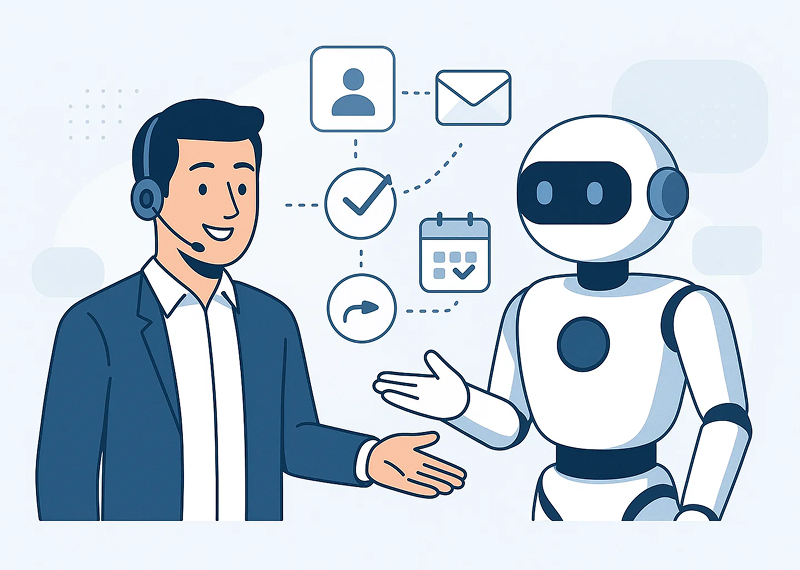
In the last decade, chatbots have been the go-to solution for businesses looking to automate communication. These bots were built on structured logic, fed with predefined FAQs, and often deployed to cut support costs or reduce the workload on sales teams.
But while chatbots had their moment, their limitations are becoming clearer every day.
In 2025, businesses no longer want static answers. They want dynamic conversations. They want outcomes. They want qualified leads, personalized engagement, and meetings booked — without having to rely on a bloated sales team.
That’s where autonomous digital sales agents come in.
This blog explores:
Bots are rule-based systems. They operate on logic trees:
They might look modern, but under the hood, they haven’t evolved much since the early 2010s.
Let’s break down their core limitations.
Bots are only as smart as the FAQs they’re trained on. These FAQs are usually written by internal teams based on:
Which means:
This works for basic support. But in sales?
Buyers expect nuanced answers. They want:
Bots simply can’t deliver that.
An FAQ-driven bot is reactive. It waits for the user to ask a question, then offers a canned response.
Sales, on the other hand, is:
Great sales agents:
Bots don’t do that. They answer. They don’t sell.
Bots don’t:
Whether you’re a CEO of a SaaS company or a marketing exec from a DTC brand, bots will serve the same response.
And that’s a conversion killer.
Now contrast that with autonomous digital sales agents.
They’re not static. They don’t wait to be asked. And they’re not confined to an FAQ script.
They’re:
They operate just like a seasoned SDR — only faster, smarter, and without burning out.
Let’s break it down.
No prompts. No manual supervision. Just execution.
Here’s what enables tools like Remo to perform like your best SDR — but 10x faster.
Remo crawls:
...and uses that to write hyper-personalized emails, subject lines, and CTAs.
Example:
“I noticed you recently integrated HubSpot — we helped a similar company reduce lead leakage by 47% post-migration. Should we chat?”
No bot can do that.
Remo reads replies. Not just the words — the intent behind them:
And replies accordingly.
If someone says:
“We’re not ready to buy yet.”
Remo might reply:
“Totally fair. Mind if I share a short prep checklist for teams evaluating AI SDRs?”
It doesn’t just end the thread. It nurtures.
Remo qualifies leads by checking:
Only qualified leads get a booking link.
This filters out noise, saving your AE time and protecting your calendar.
Buyers don’t always respond on the first touch.
Remo:
You stay top of mind — without being annoying.
Remo speaks in:
And works across time zones. Outreach in Singapore happens while you sleep in New York.
This gives you global GTM motion without global headcount.
Let’s go back to our earlier comparison.
Imagine your buyer writes:
"Hey, we’re comparing tools like Drift, Exceed, and Lavender. Can you share how you’re different?"
A bot will say:
"Here’s a link to our pricing page."
A human rep will:
Take hours to craft a thoughtful response — or worse, forget.
Remo, as an autonomous agent, will:
And it does that within seconds.
FAQs were a crutch. They helped scale basic support, but they were never built for modern outbound.
Buyers now:
Only autonomous digital agents can:
The FAQ era is over.
Today’s GTM teams need to:
And they need:
That’s why autonomous sales agents are being deployed across:
They’re not just a replacement for SDRs — they’re a growth multiplier.
Chatbots had their use. But they were never meant to close deals, qualify leads, or handle objection handling.
That’s the job of a sales agent.
In 2025 and beyond, companies that want scale, personalization, and control — without growing headcount — are choosing autonomous digital sales agents like Remo.
They don’t just respond. They drive results.
👉 Want to meet Remo in action? Book a live walkthrough and see how outbound is being redefined.